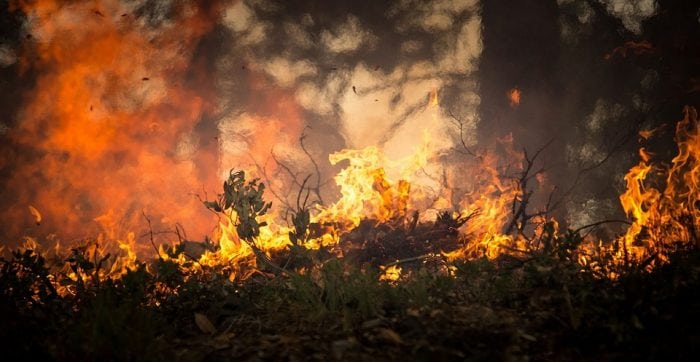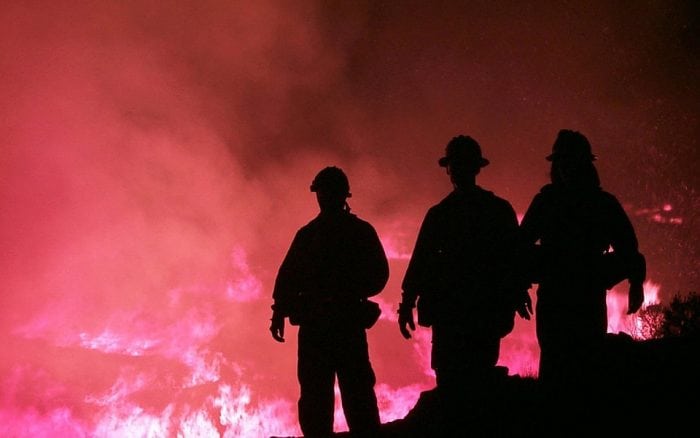
There are currently at least 17 major wildfires raging throughout the state of California. This includes the Carr Fire, which is currently blazing in Shasta County and has turned into one of the most destructive and deadliest fires in the state’s history.
Unfortunately, fire experts say that the recent spate of devastating fires isn’t a freak occurrence, rather they will be the new normal for California in the coming years.
The Carr Fire And Others
The fires burning across the state of California have destroyed more than 280,000 acres of land, destroying forests and residential areas alike. The fires have been pushed by collections of dry brush, many of which haven’t burned for decades and are overgrown.
Four people have died while fighting to control the fires, with two dying in the Ferguson fire while the Carr fire claimed the lives of two others. There are at least four civilians who have also died due to the fires. The heat and flames from the fires have been so intense that they have created their own weather patterns, including flaming tornadoes and pillars of cumulus clouds. The winds patterns that were created by the flames carried hot ash and embers for miles, lighting off other small fires.
The Carr fire has been especially bad, being one of the state’s worst fires, burning over 120,000 acres of land. The fire is responsible for the destruction of around 1400 structures, which makes it the sixth most damaging fire in California’s past. Most of the damage done by the Carr fire is centered around the Redding area. Damage estimates continue, and state officials expect the total damage done by the fire to grow much higher.
Fire crews appear to be slowly fencing the Carr fire in, making gains in containment despite the steep terrain and fluctuating winds. Fire crews have have been struggling to contain two fires burning within California’s Mendocino Country, the River fire and the Ranch fire. Combined, the two fires have devastated over 80,000 acres thus far and are currently the Ranch fire is around 15% contained while the River fire is approximately 36% contained. Firefighters in the region have been grappling with gusts of wind up to 20 miles per hour. The Ferguson fire near Yosemite National Park has burned almost 60,000 acres, fueled by overgrown brush. Presently the Ferguson fire is a little more thana 1/3rd of the way contained.
Two new fires have cropped up in the past couple days, the Eel fire, which is burning in a relatively unpopulated region in eastern Mendocino County and the Butte Fire, which is found in northwest Sutter County.
The “New Normal”

Photo: skeeze via Pixabay, CC0
As mentioned, the Carr Fire is the sixth most damaging fire in the state of California’s history. It has currently beaten out the Thomas Fire and the Nuns Fire, both of which occurred last year. The most damaging fire in the entire history of California, the Tubbs fire, also occurred in 2017. In fact, out of the top 10 most damaging fires of all time within the state, eight of them have occurred in the past 15 years. A full quarter of the state’s 20 worst, most destructive wildfires happened in 2017. Currently, the federal government estimates there are around 60 large uncontained fires burning within the western part of the United States.
The state of California seems to be experiencing more frequent and more severe fires, and wildfire experts say that this is to be expected and that the state will have to learn to deal with “the new normal”. Rising, record-breaking heat is accompanying the spread of larger, more dangerous fires. Climate change seems to be a major factor in the worsening of wildfires throughout the state.
In previous years there has been a reticence to call climate change a major contributor to the worsening fires. Indeed, the building of homes ever closer to California’s forests has played a major role in the occurrence of more frequent fires, as human-caused fires have become more common. Yet rising global temperatures, and rising temperatures throughout the state have caused more and more vegetation to become dry, creating better conditions for fire. Professor Anthony Westerling at UC Merced, explained that the warmer temperatures are likely making the fires more extreme.
Causes And Concerns

Photo: skeeze via Pixabay, CC0
Noah Diffenbaugh, a climate researcher and professor of Earth Science at Stanford University concurs. Diffenbaugh explains that the longer and more intense fire season is being driven by climate change, caused by greenhouse gases that have increased the average temperature on earth by approximately two degrees Fahrenheit. Diffenbaugh explains that the earlier melting of snowpack thanks to the increased temperature means vegetation is drier. Diffenbaugh explained:
We’re getting warmer and warmer conditions around the globe but certainly here in California and in the western United States, we’re getting earlier melting of snowpack. That means that when those warm conditions happen in the summer and fall all the vegetation is even more dried out and that means that when lightning strikes when a spark from a from a car or a campfire hits the ground that the vegetation is more dried out there’s more fuel available.
The intense summer heat dries out dead limbs and brush, turning them into perfect tinder for fire. The heat also dries out living plants, killing them or reducing their resistance to fire. A small ignition can quickly bloom into a massive fire that can rise up canyons and hillsides quickly. While California’s record rains did bring much-needed water to the state that pulled it out of its long drought, the rains also caused a substantial amount of plant growth, leaving plenty of fuel for the fires which are now burning through the state.
However, while climate change is having an impact on the severity and frequency of fires, researchers also stress that that smart building policy and land management can help mitigate the intensity of fire.
In particular, a study published by the Proceedings of the National Academy of Science (PNAS) found that climate change’s effects were more pronounced in less populated areas. Yet in more populated regions, humans can easily start fires where they normally wouldn’t happen, perhaps by campfires or cigarette butts. The authors of the study write that while the effects of climate change in some regions are notable and a real concern, human influence on wildfire needs to be part of the larger conversation about fires and climate change so that cohesive fire reduction strategies can be implemented.
The dry conditions of the brush throughout the state have kept firefighters busy and strained, constantly being dispatched to control small brush fires and prevent the fires from growing. Scott McLean, deputy chief of the California Department of Forestry and Fire Protection, explains that the best way people can help reduce the burden on firefighters is to be prepared and educated.
“The best thing you can do for the firefighters is to be prepared — be prepared to leave, make sure your family’s educated on what to do. And when it’s time, leave. Do not stay,” McLean said.









